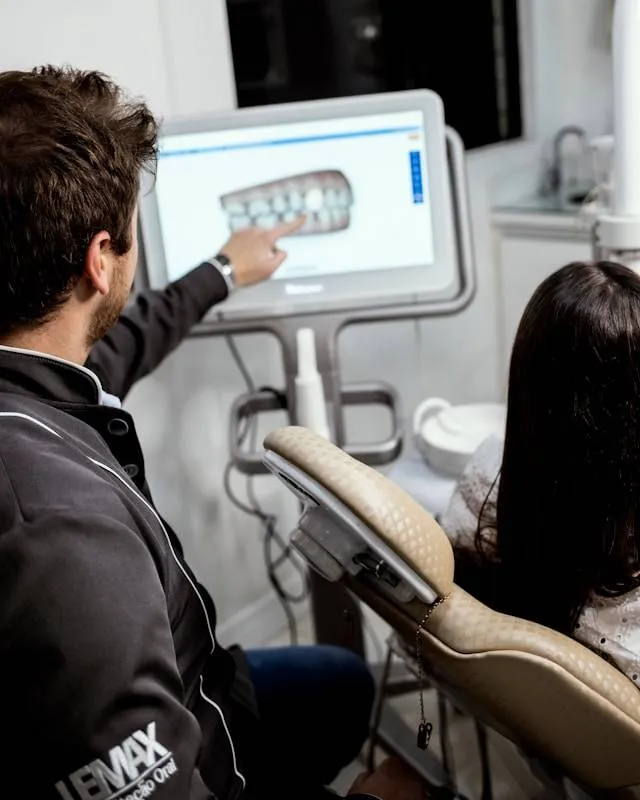1. What is periodontitis?
The periodontium is the tissue that surrounds and supports the teeth, including the gums, periodontal ligament, alveolar bone, and cementum. Periodontal disease is an inflammatory condition that affects the periodontal tissues, causing damage and destruction of the structures that support the teeth.
2. Overview of periodontal disease
Periodontal disease is one of the most common oral diseases, affecting about 20-50% of the global population. It is a chronic bacterial infection that starts with gingivitis and can progress to periodontitis if not treated promptly. Periodontal disease not only affects oral health but is also closely related to many systemic diseases such as diabetes, cardiovascular disease and other systemic diseases.

3. Classification of periodontal disease
According to the latest classification of the World Conference on Classification of Periodontal and Peri-Implant Diseases in 2017, periodontal diseases are divided into the following main groups:
3.1. Gingivitis
Gingivitis is the early stage of periodontal disease, characterized by swollen, red, and bleeding gums. This condition is reversible if treated promptly.
3.2. Chronic periodontitis
Chronic periodontitis is the most common form of periodontal disease, progressing slowly and destroying the tissues that support the teeth over time.
3.3. Acute periodontitis
Acute periodontitis progresses rapidly, causes rapid tissue damage, and often occurs in young people.
3.4. Periodontal disease as a manifestation of systemic disease
Certain systemic diseases such as diabetes and HIV/AIDS can cause or aggravate periodontitis.
3.5. Necrotic periodontal disease
Characterized by gingival necrosis, bleeding, and pain. Often associated with immunodeficiency.
3.6. Periodontal abscess
Is a localized infection that causes pain and swelling.
3.7. Periodontitis combined with endodontic lesions
Occurs when there is communication between the periodontal tissue and the dental pulp.
Includes congenital or acquired periodontal structural abnormalities.
3.9. Diseases and conditions around implants
Includes peri-implant mucositis and peri-implantitis.
4. Causes of Periodontal Disease
The main cause of periodontal disease is bacteria in dental plaque. However, there are many other risk factors that contribute to the development and progression of the disease, including:
- Poor oral hygiene
- Smoking
- Diabetes
- Stress
- Hereditary
- Some drugs
- Hormonal changes (like during pregnancy)
- Systemic disease
5. Symptoms of periodontal disease
Common symptoms of periodontal disease include:
- Swollen, red gums
- Bleeding gums when brushing teeth or eating
- Bad breath
- loose teeth
- Gum recession
- Change in bite
- Pain when chewing.
6. Subjects at risk of periodontal disease
People at high risk for periodontal disease include:
- People over 30 years old
- Smoker
- People with diabetes
- People with chronic stress
- People with a family history of periodontal disease
- People taking certain medications (such as anticonvulsants, calcium channel blockers)
- Women who are pregnant or in menopause.
7. Measures to diagnose periodontal disease
Diagnosing periodontal disease usually involves the following steps:
- Medical history assessment
- Clinical examination: gingival examination, periodontal pocket depth measurement, clinical attachment loss assessment
- X-rays to assess alveolar bone loss
- In some cases, microbiological testing may be needed to identify the type of bacteria causing the infection.
8. Periodontal disease treatments
8.1. Emergency treatment
Used in cases of acute pain or periodontal abscess, including drainage of pus and prescription of antibiotics if necessary.
8.2. Non-surgical treatment
- Scaling and smoothing of tooth root surfaces
- Use of topical or systemic antibiotics
- Oral hygiene instructions.
8.3. Surgical treatment
- Periodontal flap surgery
- Bone grafting
- Guided tissue regeneration
- In some cases, lasers may be used to aid in treatment.
8.4. Maintenance treatment
Includes regular check-ups, scaling, and oral hygiene instructions to prevent recurrence.
9. Preventing periodontal disease
Measures to prevent periodontal disease include:
- Clean your teeth properly and regularly
- Dental check-up every 6 months
- No smoking
- Good blood sugar control in diabetics
- Maintain a balanced diet rich in vitamin C and calcium
- Manage stress effectively.
Periodontal disease is an important aspect of dental care that focuses on the health of the gums and supporting tissues of the teeth. Gum disease is a common oral health problem that can cause symptoms ranging from mild inflammation and bleeding to severe damage to the teeth and gums.
If you are experiencing symptoms of gum disease or are concerned about your oral health, you should see Sakura doctors soon. Gum disease can be prevented and effectively treated with proper treatment and good oral hygiene habits.







